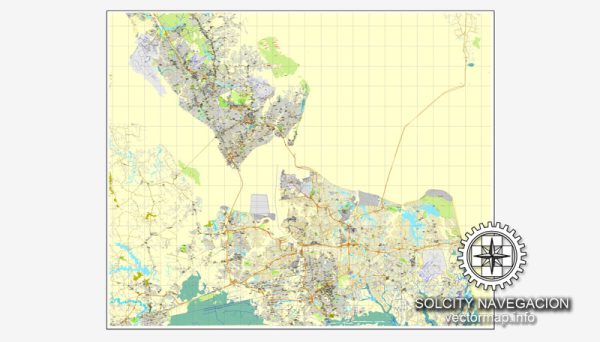Hampton Roads, a region in southeastern Virginia, is known for its diverse and rich architectural heritage. The region encompasses several cities, including Norfolk, Virginia Beach, Newport News, Hampton, and more, each with its own unique architectural character. Here’s a brief description of the architectural styles and landmarks you can find in Hampton Roads, Virginia:
- Colonial and Early American Architecture: Hampton Roads has a strong connection to America’s colonial history. You can find well-preserved examples of colonial and early American architecture in places like Williamsburg and Jamestown, which feature historic buildings, colonial-style homes, and taverns. These structures often exhibit Georgian and Federal architectural influences.
- Victorian Architecture: Victorian-era homes can be seen in neighborhoods like Ghent in Norfolk and Old Towne Portsmouth. These houses feature intricate details, ornate trim work, and diverse color palettes. Many of these homes have been lovingly restored.
- Coastal and Beachfront Architecture: Due to its location along the Chesapeake Bay and the Atlantic Ocean, Hampton Roads has numerous beachfront properties. Beach houses and condos often feature contemporary or nautical design elements to make the most of the seaside setting.
- Military and Naval Influence: The region is home to several military installations, including Naval Station Norfolk, which has influenced the local architecture. You can find naval-inspired structures, and the presence of military bases contributes to the development of the area.
- Modern and Contemporary Design: In the urban centers like Norfolk, you’ll find modern and contemporary architectural designs, often in the form of high-rise condominiums, office buildings, and mixed-use developments. These structures reflect the area’s ongoing growth and urbanization.
- Historic Landmarks: Hampton Roads boasts a range of historic landmarks, such as the Cape Henry Lighthouse, Fort Monroe, and the Norfolk Naval Shipyard, each with its own unique architectural significance.
- Waterfront Living: Given the abundance of waterways, many homes and buildings in the region are designed to take advantage of the waterfront views. This includes residences, marinas, and waterfront promenades.
- Military Museums: The area is rich in military history, and numerous museums and memorials, such as the Hampton Roads Naval Museum and the Military Aviation Museum, showcase the region’s military past and often have unique architectural designs.
- Eclectic Architectural Mix: Hampton Roads is a blend of historic preservation, urban development, military influence, and coastal living. As a result, the architecture in the region is diverse, with various styles and periods represented.
Overall, the architectural landscape of Hampton Roads, Virginia, is a reflection of its history, geographical location, and evolving urban centers. From colonial and Victorian styles to modern designs, the region offers a fascinating blend of architectural diversity that tells the story of its past and present.


 Author: Kirill Shrayber, Ph.D.
Author: Kirill Shrayber, Ph.D.